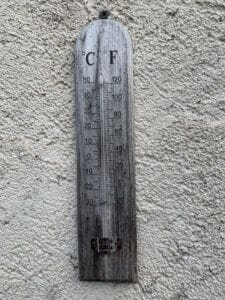There is a new technology emerging within the internet search world. Whilst most people still use text to search for something in their favourite search engine, visual search is emerging as a force that is likely to change SEO in the near future.
What is visual search?
Up until the last few years, internet search was dominated by users entering their search phrase into the text box of a search engine. The search engine obliged by displaying a list of search results that it considered best helped the user find what they looked for.
Most results pointed to traditional websites, although Google started to display more YouTube videos in its highest ranked results showing that it considered multi media content as being relevant to user search queries.
Entering a search query into a text box can be a bit tedious so the best search engines such as Google, Bing and Apple’s Siri realised that users would prefer to skip the tedious typing and just speak their search request into their smartphones and the search engine would perform some awesome speech recognition, interpret that search query and then return its most relevant research as a spoken sentence.
Voice queries work very well, but search engines are now going a significant step further, and this is where visual search solutions were developed.
Visual search allows a smartphone user to point their phone camera at an object and the search engine will use highly sophisticated image recognition to identify the object, mostly with staggering accuracy.
Google Lens
Google Lens is a great example of visual search technology in action. Once it has identified an object, it will display what it thinks it is and provide other display images of related objects on the screen.
I wanted to see how good this technology is. Google Lens is a feature in the Google search app so I used it to try and identify this old thermometer on the wall (see image). Within seconds, it identified it as a vintage thermometer and also displayed images of similar thermometers, which were pretty convincing.
The app correctly identified almost anything I pointed it at, which is not surprising as Google claim that it can identify over 1 billion objects.
The potential impact of visual search
Many factors come together at the search interface. People want immediacy, ease of use and minimal interaction when they search for something online. What can be faster than pointing your phone at an object and receiving almost instantaneous relevant information about it in image and text form?
Visual search can also interpret text in images so the search engine can interpret the meaning of the text and provide relevant answers. This technology is emerging, but as artificial intelligence algorithms improve, it can only become more powerful.
Imagine the power that combining visual and speech queries would impart to search engines. Although keyboard-based search queries are far from dead, we are starting to see these new forms of search engine interactions grow, and that growth will be inexorable in the next few years. Keyboard-based search isn’t dead, but it is slowly dying.
The problem for internet marketeers is that traditional SEO based on matching web page text to search queries will gradually be replaced by matching web pages to images.
For example a traditional online marketing agency like this Toronto SEO firm will currently advise its clients to create content based on on-page SEO considerations, such as well crafted blogs, and then augment those efforts with off-page reputation and authority building to achieve search engine success.
If visual searching becomes more prevalent, this SEO firm is likely to be advising their clients to be considering how their content will offer relevancy when the search engine user takes an image of an object and then the search engine interprets their clients content to assess whether it is a good match for the search request.
For example, this is a very feasible scenario that may soon come to pass. Imagine someone who is house hunting walking past a property and then thinking. “I would like to buy a house like that”. So they take a photo of the house with Google Lens and then use that image and their voice to say to Google “Find me a freehold town house like this for sale”.
Google’s impressive ability to find images that are similar to the image supplied by the user means that it would be able to find similar houses that are listed on properties for sale websites. In this case, Google would be using images and image recognition to find the search results and not the text descriptions that are currently prevalent in determining search results.
Visual searching will soon drive the need for better image SEO techniques.
Conclusion
It will be websites that realise the importance of image and object recognition in future search engine developments that are prepared for a new era of search engine optimisation. Those companies and search engine marketing specialists that grasp these emerging visual search technologies will thrive, leaving the traditional text based content creators wondering why they are seeing visitor numbers decline.


